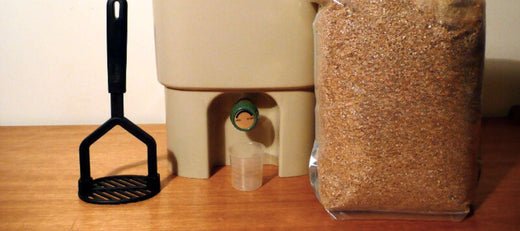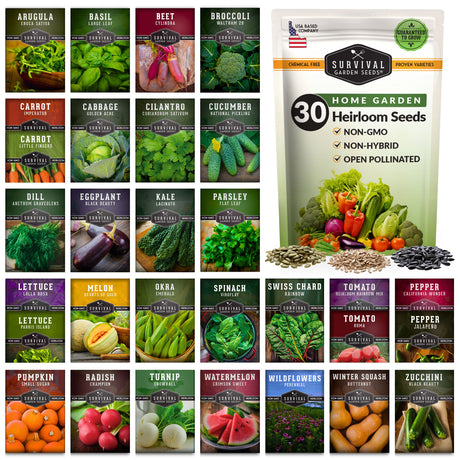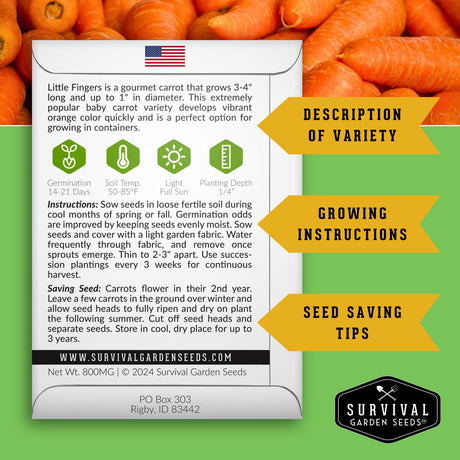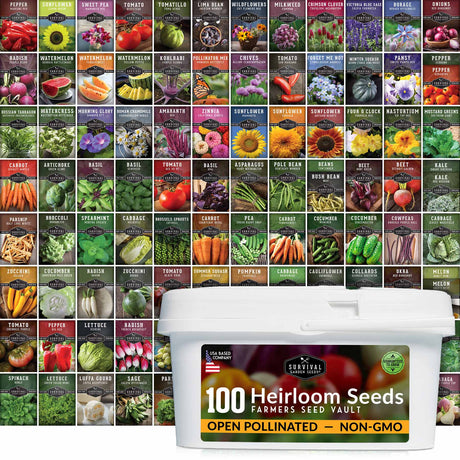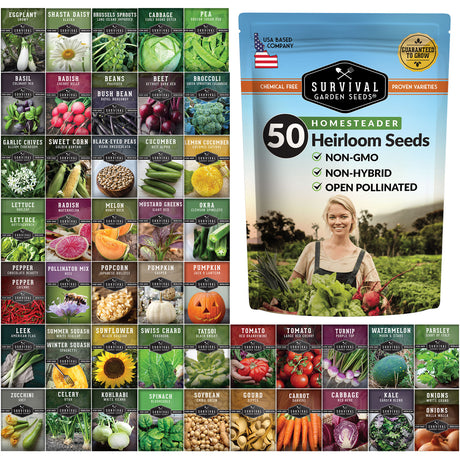Have you wanted to start composting but don’t have a space for a big hot composting bin? Sure, there are the new-fangled electric composting machines on the market, but there is an odor-free, organic, and non-electric method of composting that requires nothing more than a bucket with a drain spigot and some bacteria-laced carbohydrates.
What is Bokashi Composting?
Bokashi composting is actually a fermentation method developed in Japan in the early 1980s that produces “bokashi tea” - a highly effective fertilizer as well as broken-down food waste that can either be added to a regular compost bin or buried for disposal. Bokashi composting takes place in an anaerobic (oxygen-free) environment so it produces less carbon dioxide than other composting methods. Since it is a fermentation process, you can compost some things you cannot compost with more traditional composting methods. This makes it an environmentally friendly way to eliminate your household food waste.
What Can Be Composted With the Bokashi Method
In addition to the traditionally composted items that include:
- Fruits and vegetables
- Eggshells
- Coffee grounds and tea
- Plant clippings
You can also compost:
- Cooked food and leftovers (cooled to room temperature)
- Nuts and seeds
- Meat, fish, and bones
- Dairy products or food with dairy in it
- Fermented and preserved foods
- Oyster, clam, and shrimp shells
Getting Started

To get started with bokashi composting, you will need a couple of items. A bokashi bucket is specially designed with a tightly sealed lid and a spigot at the bottom that will allow you to remove the bokashi tea. Some people use two bins so that one can be fermenting as the other gets filled. To make the whole process work, you also need what is commonly called bokashi bran. Bokashi bran is usually made up of a combination of bran, molasses or some other sugar, and what are called “Effective Microorganisms” that include Lactobacilli and yeasts which are necessary for the fermentation. Both the bucket and the bran are readily available from various sources online.
The Bokashi Composting Process
There are 5 basic steps to the bokashi composting process.
- Load up your bin with food scraps and waste. Try to cut your scraps into even-sized pieces around 2 inches or smaller. Add scraps as you produce them. Once started, the bin will smell a bit like pickles or sauerkraut because of the fermentation.
- Add the bokashi bran to your bin. You should sprinkle 1-2 tablespoons of bran per inch of food scraps. If you are unsure, it is better to have too much bran than to have too little; you can’t overdo it. Smash the top layer of food down as flat as possible (you can use a layer of plastic wrap on top to help seal things in between adding more scraps). Remember, you are trying to keep this as oxygen-free as possible.
- Once your bin is full, let it ferment untouched and unopened for at least 2 weeks. You may need to let it go a little longer if you didn’t chop your scraps small enough.
- Every 2-3 days during the fermentation period, use the spigot on your bin to drain the bokashi tea. You can store this liquid, or use it to make fertilizer right away.
- After the 14-day fermentation period you can drain the remaining tea and bury or fully compost what remains in your bucket (see below). Rinse the bucket thoroughly and start the process again.
Troubleshooting

When you open your bokashi bin, you shouldn’t notice an odor of decay. While it won’t smell like roses, there should only be a sweet and sour odor of fermentation. If the odor is foul, check your lid for condensation. This may indicate that your mixture is too wet and you can try adding some shredded newspaper to help absorb moisture. If condensation isn’t the issue you can try to remedy it by adding more bran. If that does not clear up the problem, you may have to dump and rinse your bucket and start over.
You may see white mold in your bin, which is fine. If you see blue, black, or green molds, then decay may have occurred and again, it is best to restart the process with a fresh bin.
Utilizing the Results
Your bokashi bin will produce two things, the tea and what is basically pre-compost, the pickled remains of your food scraps.
The tea makes an excellent fertilizer that can be used on both indoor and outdoor plants. It is best used within a day of being drained from your bucket. Dilute 2-3 ounces of tea to 1 gallon of water and add to the soil. Bokashi tea has been shown to improve plant yields by improving nitrogen in the soil. You can use the bokashi tea fertilizer as often as every 14 days. Your unused juice can be stored in an airtight container for up to a month. Undiluted, unused juice can be disposed of directly into the kitchen or bathroom drain and will help prevent algae buildup and control drain odor.
The pre-compost left in the bucket will not be fully broken down and is highly acidic. There are a few ways you can still make good use of this product. You can bury it in a fallow part of your garden, add it to your regular compost pile, or feed it to your worms if you are vermicomposting. Because of the acidic nature of the pre-compost, plant roots shouldn’t come in contact with it for 4-6 weeks. The lower parts of raised beds can be filled with 30 percent bokashi waste and 70 percent regular soil and compost on top. Pre-compost will break down very quickly when added to your regular compost pile. For vermicomposting, worms can be sensitive to acidic environments, so it is a good idea to rinse your compost and introduce it slowly until they get used to it.
This system produces useful liquid fertilizer as well as material that will compost quickly when added to your garden compost. It is a low-carbon method that allows you to compost all of your food waste, and introduce healthy microorganisms into the environment. If you have been seeking a way to more sustainably dispose of your food scraps that isn’t smelly or messy and still easy to do, Bokashi composting might be the solution for you.
Image Credits:
Bokashi Bin & Bran - Zenyrgarden, CC BY-SA 4.0 via Wikimedia Commons
Food Waste Decomposing - Pfctdayelise, CC BY-SA 3.0 via Wikimedia Commons







